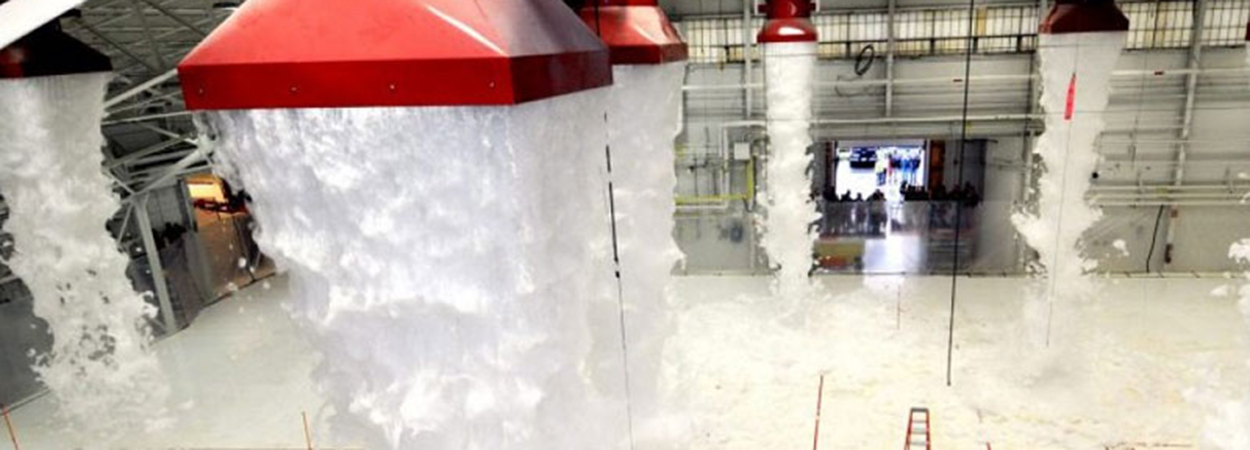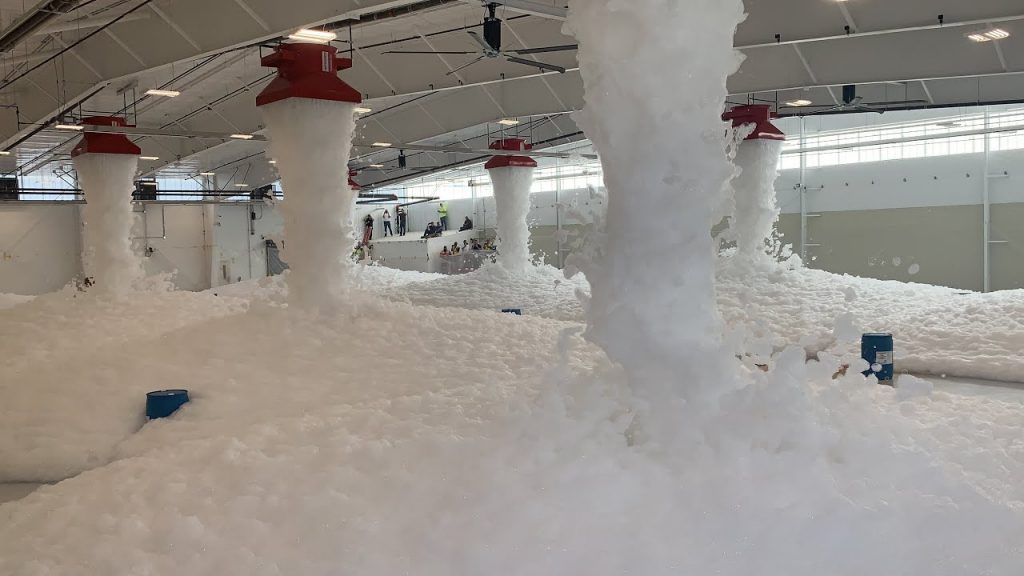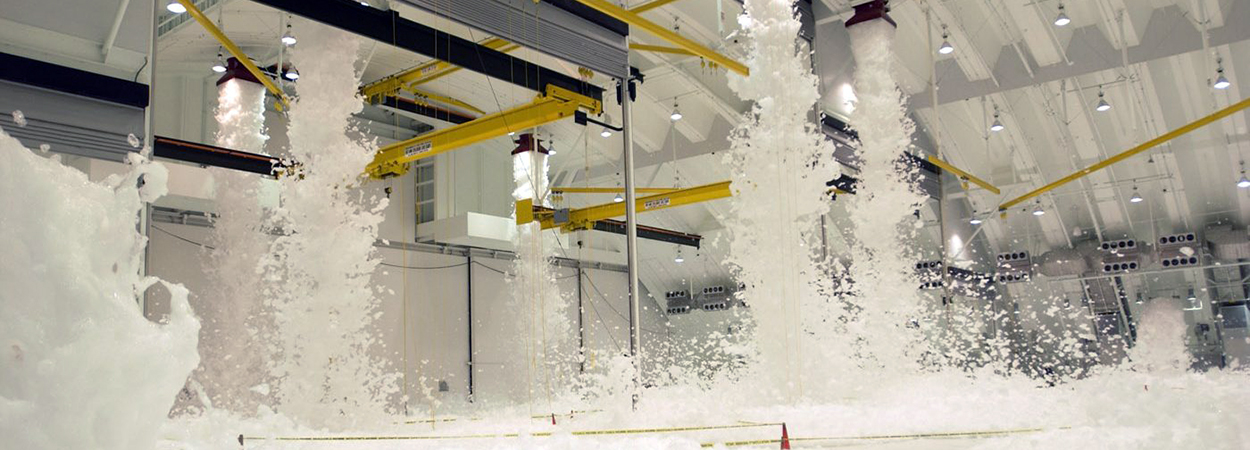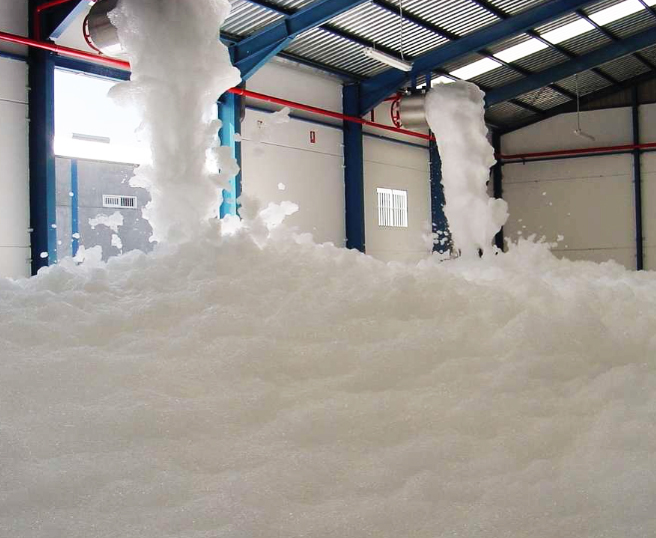Products
Foam fire suppression systems are preferred for their effective extinguishing capability in fires involving flammable and combustible liquids that cannot be extinguished with water.
Properly designed foam fire suppression systems can quickly extinguish fires in areas where flammable and combustible liquids are used or stored.
Flammable liquids have a flash point above 38°C, while combustible liquids have a flash point below 38°C.
Flammable and combustible liquids include petroleum-derived hydrocarbons and polar solvents.
Hydrocarbons are organic compounds containing only carbon and hydrogen atoms (such as gasoline, diesel fuel, fuel oil, and oils).
Polar solvents are liquids that can mix with water and are used as solvents (such as alcohol derivatives, acetone, ammonia, ethyl acetate, etc.).
Foam fire suppression systems, unlike water-based systems, create a film layer on the surface of the flammable substance, offering several advantages:
• The foam film layer cuts off the contact between fuel vapor and oxygen.
• The foam film layer prevents evaporation on the fuel surface.
• The foam film layer separates the fuel surface from the flame.
NFPA 11, NFPA 16, NFPA 30, NFPA 409, NFPA 418 are among the most commonly used standards in the design of foam fire suppression systems.
During design, local and international regulations such as the Turkish Fire Protection Regulation and the International Civil Aviation Convention are taken into account.

Protein-Based
Protein-based (P) foam concentrates
Fluoroprotein (FP) foam concentrates
Film-forming fluoroprotein (FFFP) foam concentrates
Alcohol-resistant film-forming (AR-FFFP) protein-based foam concentrates
Protein-based (P) foam concentrates
Fluoroprotein (FP) foam concentrates
Film-forming fluoroprotein (FFFP) foam concentrates
Alcohol-resistant film-forming (AR-FFFP) protein-based foam concentrates
Synthetic-Based
Aqueous film-forming (AFFF) foam concentrates
Alcohol-resistant aqueous film-forming (AR-AFFF) foam concentrates
Aqueous film-forming (AFFF) foam concentrates
Alcohol-resistant aqueous film-forming (AR-AFFF) foam concentrates
Foam Fire Suppression Systems by Expansion Ratio
Low Expansion Foam Fire Suppression Systems [Expansion ratio 20:1]
Medium Expansion Foam Fire Suppression Systems [Expansion ratio 20:1 – 200:1]
High Expansion Foam Fire Suppression Systems [Expansion ratio 200:1 – 1000:1]
Low Expansion Foam Fire Suppression Systems [Expansion ratio 20:1]
Medium Expansion Foam Fire Suppression Systems [Expansion ratio 20:1 – 200:1]
High Expansion Foam Fire Suppression Systems [Expansion ratio 200:1 – 1000:1]
• Flammable & combustible material depots
• Printing & paint manufacturing facilities
• Tank farms
• Petrochemical plants and refineries
• Power plants
• Chemical factories
• Maintenance workshops
• Shipyards and dock areas
• Aircraft & helicopter hangars
• Airports
• Printing & paint manufacturing facilities
• Tank farms
• Petrochemical plants and refineries
• Power plants
• Chemical factories
• Maintenance workshops
• Shipyards and dock areas
• Aircraft & helicopter hangars
• Airports
• Bladder tank systems that proportion foam concentrate with their own proportioner,
• Atmospheric tank systems that proportion foam-water using self-aspirating foam inductors,
• Atmospheric tank systems that proportion foam-water using hydraulic balanced foam pumps,
• Atmospheric tank systems that proportion foam-water using turbine type foam pumps.

Foam Sprinklers or Nozzles
Closed-type sprinklers can be used in storage or special use areas to design wet or dry piped systems, and open-end nozzles can be used for deluge systems.
Foam Monitors
They are used to fight fire from a safe distance and prevent objects at risk of ignition from burning and/or exploding.
Monitors are available in different types: manually controlled, self-inducting with water, and remote-controlled.
Foam Makers and Foam Chambers
They are used to protect the inner surfaces of flammable and combustible liquid storage tanks and the areas they are located in against fire.
These foam-water discharge devices create a more expanded foam-water mixture during discharge by drawing in air through special orifices on them.
Foam Generators
Using high expansion foams, they provide a more expanded foam-water mixture with less water flow compared to other foam fire suppression system equipment.
Since less water is used, lower water damage is expected. Foam generators offer effective fire extinguishing performance for special application areas with their special designs. They require a high amount of fresh air intake to achieve the desired expansion rate.
Systems using discharge units that have not been tested for foam fire suppression performance and do not have any approvals will pose different risks within themselves.
Therefore, it is essential that the foam discharge devices used are suitable for use with the relevant foam type and are listed.

X
We use legal cookies to provide you with a better service. For information COOKIE POLICY ve PRIVACY POLICY Check out our sections.

